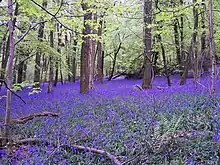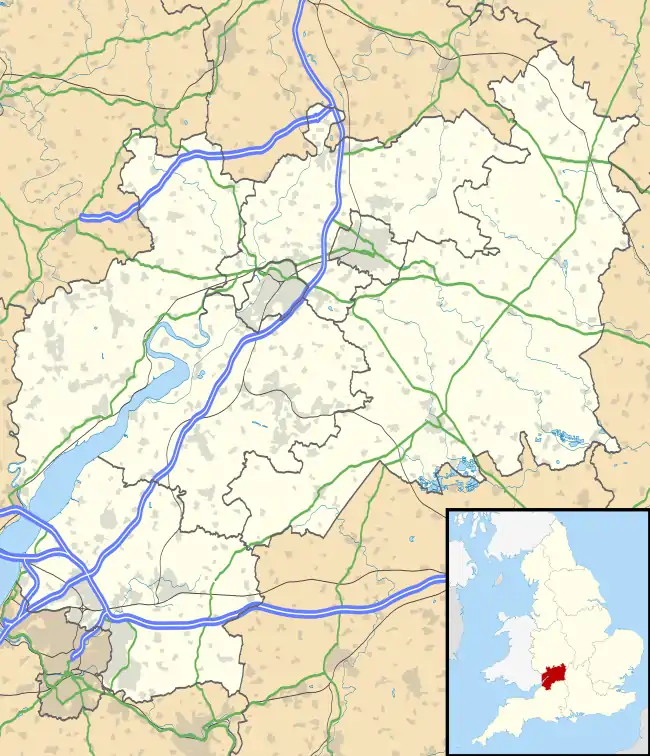Bigsweir Woods
Bigsweir Woods (grid reference SO546060) is a 48.16-hectare (119.0-acre) biological Site of Special Scientific Interest in Gloucestershire, notified in 1984.[1][2] The site is listed in the 'Forest of Dean Local Plan Review' as a Key Wildlife Site (KWS) (including Wyeseal and Slip Woods).[3]
| Site of Special Scientific Interest | |
 Bluebells in Bigsweir Woods | |
 Location within Gloucestershire | |
| Area of Search | Gloucestershire |
|---|---|
| Grid reference | SO546060 |
| Coordinates | 51.751297°N 2.658343°W |
| Interest | Biological |
| Area | 48.16 hectare |
| Notification | 1984 |
| Natural England website | |
The site is within the Wye Valley Area of Outstanding Natural Beauty and is part owned by the Woodland Trust.[1]
Wye Valley Woodlands/ Coetiroedd Dyffryn Gwy are recognised as a Special Area of Conservation (SAC) under the EU Habitats Directive.[4][5]
Habitat and flora
The woods of the region are one of the most important areas of woodland conservation in the United Kingdom, being semi-natural woodland, and run continuously along the Lower Wye Gorge (which is also notified as an SSSI).[1]
There is a rich mixture of tree types and rare and local species are present. Bigsweir Woods are sited on Devonian Old Red Sandstone and quartz conglomerate. This produces acid soil. The wood is dominated by Sessile Oak but includes some Beech, Small-leaved Lime and Birch. Hazel, Beech, Small-leaved Lime also make up an understorey with Rowan and Holly. Ground flora includes Bramble, Bracken, Ivy, Dog's Mercury and Bilberry.[1]
Local herbs include Forester's Woodrush (Luzula forsteri), Bitter Vetch, Alder Buckthorn and Wood Fescue (Festuca altissima). There are carpets of Bluebell. The site supports a significant range of ferns.[1]
References
- Natural England SSSI information on the citation
- Forest of Dean District Local Plan Review, adopted November 2005, Appendix D 'Nature Conservation Site Designations Within the Forest of Dean District', Sites of Special Scientific Interest Archived 29 October 2013 at the Wayback Machine
- Forest of Dean District Local Plan Review, adopted November 2005, Appendix D 'Nature Conservation Site Designations Within the Forest of Dean District', Key Wildlife Sites
- Information on Wye Valley Woodlands/ Coetiroedd Dyffryn Gwy Special Area of Conservation designation
- Joint Nature Conservation Committee Listing of Special Areas of Conservation
SSSI Source
External links
![]() Media related to Bigsweir Woods at Wikimedia Commons
Media related to Bigsweir Woods at Wikimedia Commons
- Natural England (SSSI information)
- Woodland Trust